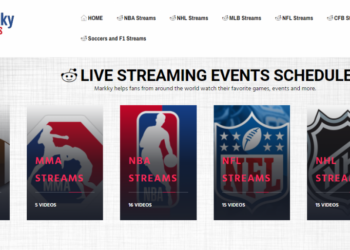Every single business should use all efficient ways to successfully promote their business. One such way is B2B website design. It plays a vital role in marketing and lead generation. We can call enterprise website design successful when it has considered the preferences, demography, and intentions of your target audience. These aspects are fully implemented by the use of Drupal technology like Elevated Third offers, and we will discover why it is useful for B2B design solutions. Moreover, we will figure out what techniques boost your sales and engagement with potential customers.
Why choose Drupal for enterprise web design?
It is no surprise that the B2B sales cycle is longer and more complicated as it requires careful consideration of the customer’s journey and their different needs. What does Drupal offer in this matter?
#1 Scalability and flexibility
B2B web design creation has to consider options for future scaling. Drupal offers scalability features to expand your business as it grows. What is more, you can easily customize your website to business requirements.
#2 Security features
Security is a top priority for all companies. It is a known fact that Drupal provides high-quality security features, which is especially important for sensitive data and operations.
#3 Content management
B2B is always about large volumes of content. And that’s where Drupal excels! It offers a structured approach to content management and advanced features to manage it.
#4 Customization and personalization
Every business is unique and requires tailor-made solutions. Drupal is the right place to look for them. An extensive range of modules and themes and an open-source nature – everything you need to customize and personalize features to meet your business needs.
#5 Enhanced functionality
Drupal stands out by its option to manage various websites from a single platform. It is an amazing tool for large-scale businesses.
#6 Integration options
Integration with third-party systems and APIs is super important for enterprises. Therefore, Drupal can easily connect with CRM systems, ERPs, marketing automation tools, and more.
Effective practices for B2B website design development
So, we have outlined the efficiency of Drupal for your enterprise design. And now, we want to take you on a journey of the most useful tips to make your website more engaging.
#1 Understand your web visitors
Building a website with an understanding of your web visitors is key to engagement. Utilize both quantitative and qualitative research to identify various visitor segments and their needs. Review website analytics and gather insights from your team members who interact with prospects regularly. Empathy towards your audience is the foundation of effective B2B website design.
#2 Line up with the customer journey
Understanding your customer journey is crucial to knowing their intentions. They are not always ready to make immediate decisions. That is why line up your website with your target audience preferences in mind. Make sure you involve intuitive navigation into your website to easily guide visitors through their journey. No wonder UX and UI design is essential.
#3 Include storytelling in design
No matter the industry and type of business, each and every one of them has some story to tell. Don’t be afraid to include your own storytelling in your website design. How do you make it happen? Your content has to be catchy and memorable. It helps build an emotional connection with all visitors. How do you do this magic? You can use specific fonts. colors, images, animation, and other visual effects to convey your brand’s story.
#4 Clearly define your value proposal
Creating a strong web-based value proposition is essential to grab visitors’ attention and showcase your value concisely. Clearly state who you are, what you do, and how you stand out, and guide visitors on the next steps they should take.
#5 Guide visitors with calls to action
Calls to action (CTAs) are vital in guiding visitors to the next step. Consider different CTAs based on visitor needs and journey stages. ‘Learn More’ is often the initial CTA, leading to product or service pages where visitors can gather more information.
#6 Build trust and credibility
Establishing trust is crucial for engaging visitors. Use visual trust elements, industry recognition, secure protocols, and credibility factors to instill confidence in your brand. Demonstrating trustworthiness is fundamental to retaining visitors to your site.
#7 Your products or services at full display
How can you attract and retain visitors without presenting your products and/or services? Make sure you design a custom page layout to showcase everything you offer. However, just presenting them is not enough. Add information about suitability, value, pros and cons, and necessary steps before making a decision.
#8 Implement engaging visuals
User engagement is half of success! That is why the use of captivating images and videos is a must. These visuals can include some hero pictures that represent your brand, information about you, or blog posts. Remember to always align these visuals with your company’s brand.
#9 Security and page load speed
If you want to have satisfied customers, make sure your website loads as fast as possible. We live in an era where every minute matters, and no one likes to wait long. pay attention to page optimization tools and improve your website performance. You need to consider such factors as hosting, image, and video optimization. And the most important aspect – security. It is not only about protecting users’ sensitive data but also about building trust.
#10 Offer engaging resources
Engagement is key for B2B websites. Provide informative resources, case studies, white papers, and blogs to cater to diverse visitor needs. Use engaging content to position your team as experts and establish credibility.
Final thoughts
As soon as you implement these effective practices of enterprise website design development, you can rest assured your target audience is satisfied! Find a reliable partner like Elevated Third. Our main recommendations – work with professionals, define a clear scope of work, set realistic expectations, and align your website with your marketing goals.






